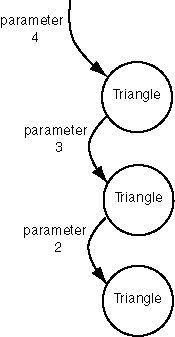Yet Another Activation
Here is the new picture. You may be a bit uneasy about something called "Triangle" being active multiple times. But this is perfectly fine. Think of each activation as being a "clone" of Triangle that has been given its own little task.

